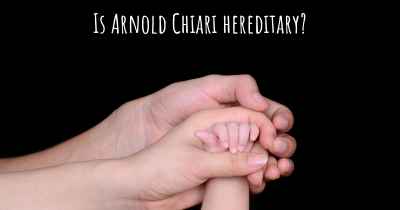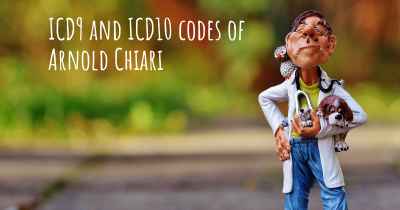What is the history of Arnold Chiari?
When was Arnold Chiari discovered? What is the story of this discovery? Was it coincidence or not?

Arnold Chiari malformation, also known as Chiari malformation, is a structural defect in the brain and spinal cord. It is named after two Austrian pathologists, Hans Chiari and Julius Arnold, who first described the condition in the late 19th and early 20th centuries, respectively.
The history of Arnold Chiari malformation begins with Hans Chiari, who in 1891 identified abnormalities in the lower part of the brainstem and cerebellum in post-mortem examinations. He classified these abnormalities into four types, with Type I being the most common. However, it was Julius Arnold who expanded on Chiari's work and provided further insights into the condition.
Julius Arnold, in 1907, described a more severe form of the malformation, which is now known as Type II Chiari malformation. He observed that the cerebellar tonsils extended into the spinal canal, causing compression and disruption of the normal flow of cerebrospinal fluid (CSF). Arnold's work laid the foundation for understanding the underlying pathology of Chiari malformation.
Over the years, advancements in medical imaging techniques, such as magnetic resonance imaging (MRI), have allowed for better diagnosis and understanding of Chiari malformation. The condition is now classified into four types:
- Type I: The most common form, where the cerebellar tonsils extend into the upper spinal canal.
- Type II: Also known as Arnold-Chiari malformation, characterized by more severe brainstem and cerebellar abnormalities, often associated with spina bifida.
- Type III: A rare and severe form where brain tissue protrudes through an opening in the back of the skull.
- Type IV: The rarest form, involving an underdeveloped or incomplete cerebellum.
Chiari malformation can be congenital or acquired. Congenital Chiari malformation is present at birth and is thought to result from abnormal brain development during fetal growth. Acquired Chiari malformation can occur later in life due to conditions such as trauma, infection, or spinal fluid drainage procedures.
Symptoms of Chiari malformation can vary depending on the type and severity of the condition. Common symptoms include headaches, neck pain, dizziness, balance problems, difficulty swallowing, and numbness or tingling in the extremities. In more severe cases, Chiari malformation can lead to hydrocephalus, a condition characterized by the accumulation of excess CSF in the brain.
Treatment for Chiari malformation aims to relieve symptoms and prevent further complications. In mild cases, conservative management, such as pain medication and physical therapy, may be sufficient. However, in more severe cases, surgical intervention may be necessary to decompress the brain and restore normal CSF flow.
Today, ongoing research and advancements in medical technology continue to improve our understanding and treatment of Arnold Chiari malformation. Early diagnosis and appropriate management can significantly improve the quality of life for individuals living with this condition.
Posted Jul 23, 2017 by Erena 2000
Posted Aug 30, 2017 by Michelle 2000
Posted May 27, 2018 by xyzmike1 3050
Posted Nov 29, 2019 by TRIPLE-1 CHIARI 2500
Posted Aug 30, 2017 by Candelaria 6560
Posted Oct 11, 2017 by Lynda Estrada 6835
In 1907, Schwalbe and Gredig, two students from a team from the University of Heidelberg led by dr. Julius Arnold described a total of four other cases, prepending the name of his master to the Chiari in the designation of the malformation.
Posted Nov 2, 2017 by Pochi 2050








